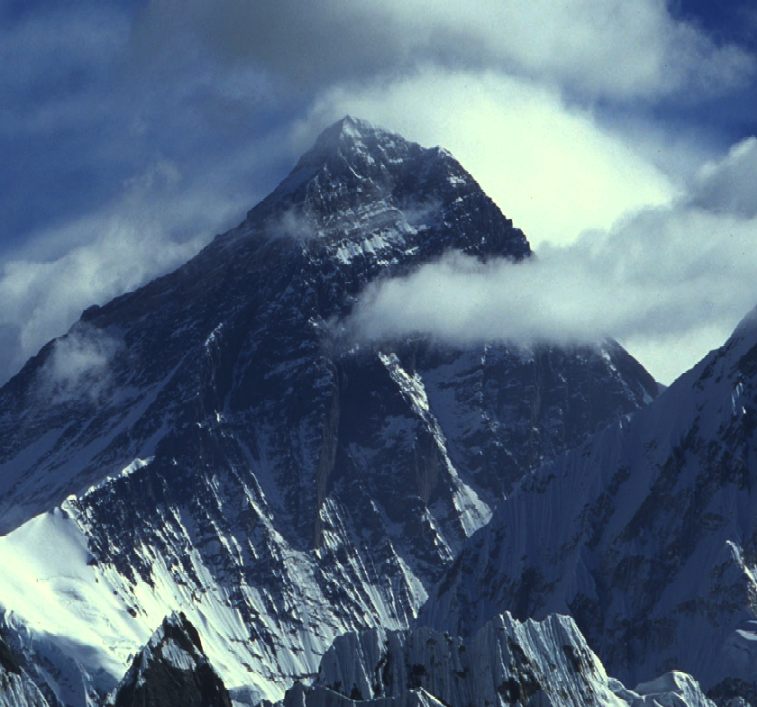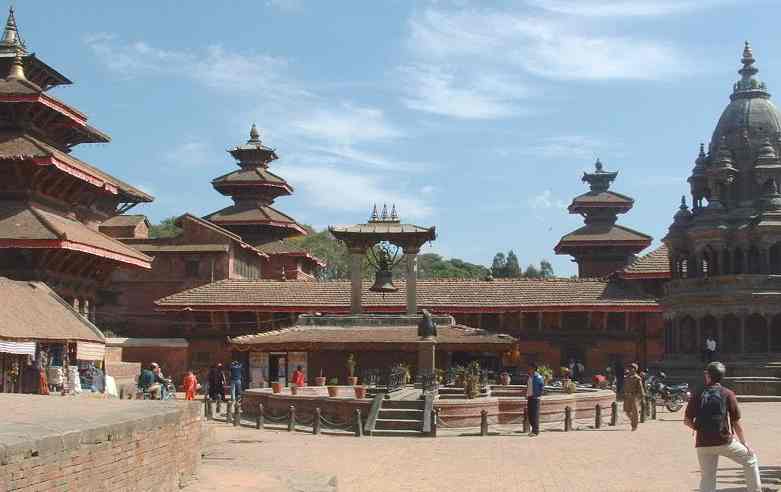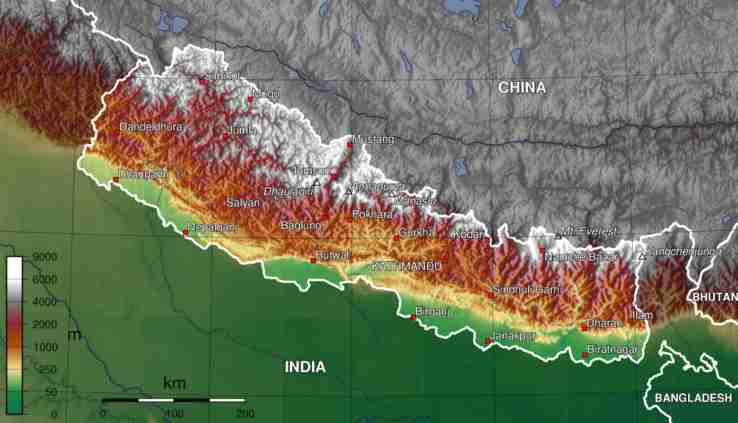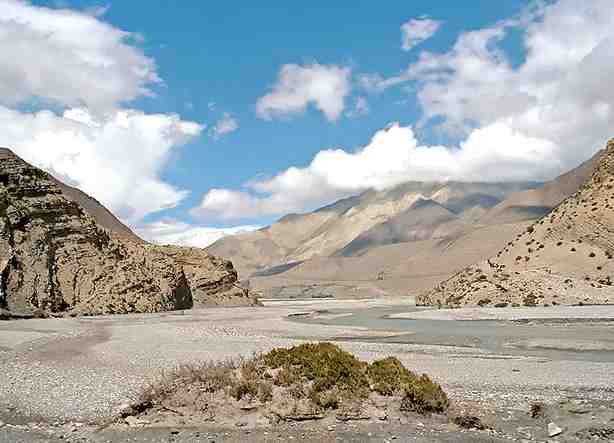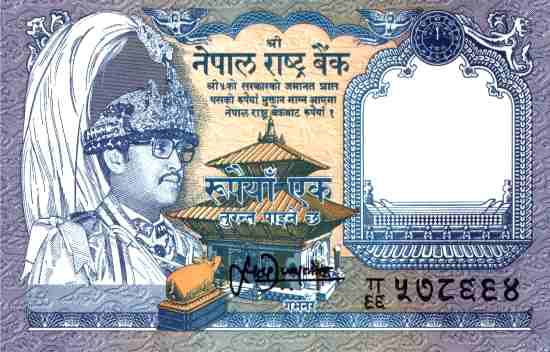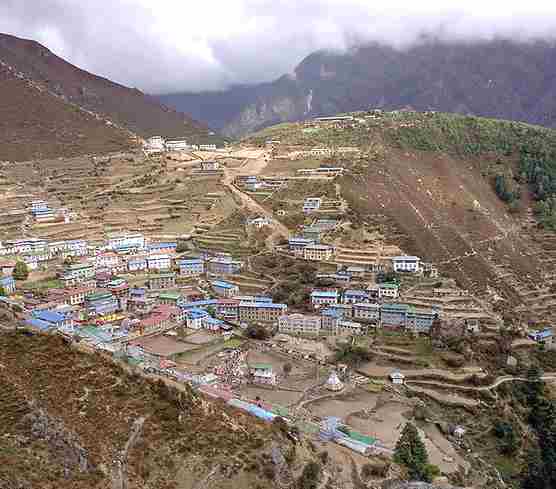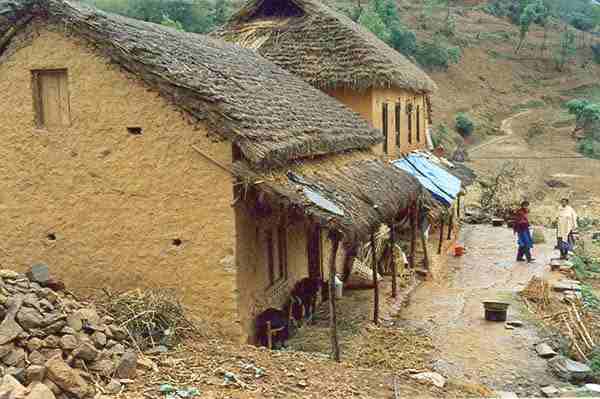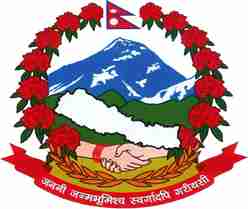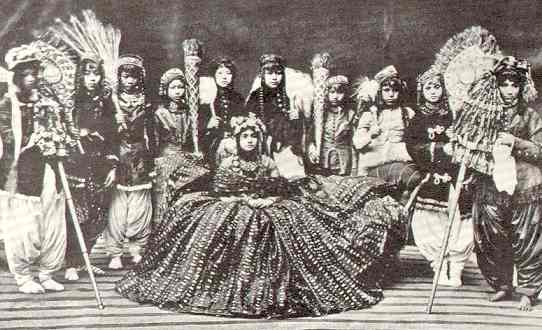|
NEPAL
Please use our A to Z INDEX to navigate this site
|
|||||||||||||||||||||||||||||||||||||||||||||||||||||||||||||||||||||||||||||||||||||||||||||||||||||
|
STEVE OBBAYI - MOUNT EVEREST CLIMB - http://www.wayn.com/profiles/Steve-Obbayi
Nepal,
officially known according to its Interim Constitution
as the State of Nepal is a landlocked Himalayan country in South Asia that
overlaps with East Asia, bordered by Tibet to the north
and by India to the south, east and west. For a small
territory, the Nepali landscape is uncommonly diverse,
ranging from the humid Terai in the south to the lofty
Himalayas in the north. Nepal boasts eight of the
world's top ten highest mountains, including Mount
Everest on the border with China. Nepal has been made
famous for its tourism, trekking, hiking, camping,
mountain biking, national wildlife parks, jungle
safaris, river rafting, sport fishing, and its many
beautiful temples and places of worship. Kathmandu is
the capital and largest city. The other main cities
include Pokhara, Biratnagar, Lalitpur (Patan), Bhaktapur,
Birendranagar, Bharatpur, Siddhartanagar (Bhairahawa), Birgunj, Janakpur,
Nepalgunj, Hetauda, Dharan and Mahendranagar. The origin of the name Nepal is
derived from the Nepal Bhasa, which is the language of
Newars and has its origin to the fact that Kathmandu
Valley used to be called Nepa, the term that is still
used by Newars. Some say the name also comes from an
ancient sage living in the area.
After a long and rich history, during which the region splintered and coalesced under a variety of absolute rulers, Nepal became a constitutional monarchy in 1990. However, the monarchy retained many important and ill-defined powers. This arrangement was marked by increasing instability, both in the parliament and, since 1996, in large swathes of the country that have been fought over by Maoist insurgents. The Maoists, alienated from mainstream political parties, went underground and started a guerrilla war against both monarchy and mainstream political parties. They have sought to overthrow feudal institutions, including the monarchy, and establish a Maoist state. This led to the Nepalese Civil War in which more than 15,000 people have died. On the pretext of quashing the insurgents, the king closed down the parliament and sacked the elected prime minister Sher Bahadur Deuba of Nepali Congress (Democratic) in 2002 and started ruling through prime ministers appointed by him. He then unilaterally declared a state of emergency early in 2005, and assumed all executive powers. Following the 2006 democracy movement, the king agreed to relinquish the sovereign power back to the people and reinstated the dissolved House of Representatives on April 24, 2006. Using its newly acquired sovereign authority, on May 18, 2006, the newly resumed House of Representatives unanimously passed a motion to curtail the power of the king and declared Nepal a secular state. As of September, 2006, a complete rewrite of the country's constitution was still expected to happen in the near future.
History
Neolithic tools found in the Kathmandu Valley indicate that people have been living in the Himalayan region for at least nine thousand years. It appears that people who were probably of Tibeto-Burman ethnicity lived in Nepal two and half thousand years ago.
Indo-Aryan tribes entered the valley around 1500 BCE. Around 1000 BCE, small kingdoms and confederations of clans arose. One of the princes of the Shakya confederation was Siddhartha Gautama (563–483 BC), who renounced his royalty to lead an ascetic life and came to be known as the Buddha ("the one who has awakened"). By 250 BCE, the region came under the influence of the Mauryan empire of northern India, and later became a puppet state under the Gupta Dynasty in the fourth century CE. From the late fifth century CE, rulers called the Licchavis governed the area. The Licchavi dynasty went into decline in the late eighth century CE and from 879 was followed by a Newar era, although the extent of their control over the entire country is uncertain. By late eleventh century, southern Nepal came under the influence of the Chalukya Empire of southern India. Under the Chalukyas, Nepal's religious establishment changed as the kings patronised Hinduism instead of the Buddhism prevailing at that time.
Hindu temples in Patan, the capital of one of the three medieval kingdoms
By the early thirteenth century, leaders were emerging whose names ended with the Sanskrit suffix malla ("wrestler"). Initially their reign was marked by upheaval, but the kings consolidated their power over the next two hundred years. By late fourteenth century, much of the country began to come under a unified rule. This unity was short-lived; in 1482 the kingdom was carved into three areas, Kathmandu, Patan, and Bhadgaon, which engaged in petty rivalry for centuries.
In 1765, the Gorkha ruler Prithvi Narayan Shah set out to unify the kingdoms, after first seeking arms and aid from Indian kings and buying the neutrality of bordering Indian kingdoms. After several bloody battles and sieges, he managed to unify Nepal three years later. However, the actual war never took place while conquering the Kathmandu Valley. In fact, it was during the Indra Jaatra, when all the valley citizens were celebrating the festival, Prithvi Narayan Shah with his troops captured the valley, virtually without any effort. This marked the birth of the modern nation of Nepal. A dispute and subsequent war with Tibet over control of mountain passes forced Nepal to retreat and pay heavy repatriations to China, who came to Tibet's rescue. Rivalry with the British East India Company over the annexation of minor states bordering Nepal eventually led to the brief but bloody Anglo-Nepalese War (1815–16), in which Nepal defended its present-day borders but lost its territories west of the Kali River, including present day Uttarakhand state and several Punjab Hill States of present day Himachal Pradesh. The Treaty of Sugauli also ceded parts of the Terai and Sikkim to the Company in exchange for Nepalese autonomy.
Factionalism among the royal family led to instability after the war. In 1846, a discovered plot to overthrow Jang Bahadur, a fast-rising military leader, by the reigning queen, led to the Kot Massacre. Armed clashes between military personnel and administrators loyal to the queen led to the execution of several hundred princes and chieftains around the country. Bahadur won and founded the Rana dynasty, leading to the Rana autocracy. The king was made a titular figure, and the post of Prime Minister was made powerful and hereditary. The Ranas were staunchly pro-British, and assisted the British during the Sepoy Rebellion in 1857, and later in both World Wars. In 1923 the United Kingdom and Nepal formally signed an agreement of friendship, truth, and law, in which Nepal's independence was recognised by the UK.
In the late 1940s, emerging pro-democracy movements and political parties in Nepal were critical of the Rana autocracy. Meanwhile, China occupied Tibet in 1950, making India keen on stability in Nepal, to avoid an expansive military campaign. Thus India sponsored Tribhuvan as Nepal's new king in 1951, and a new government, mostly comprising the Nepali Congress Party. After years of power wrangling between the king and the government, the democratic experiment was dissolved in 1959, and a "partyless" panchayat system was instituted to govern Nepal. In 1989, the "Jan Andolan" (People's) Movement forced the monarchy to accept constitutional reforms and establish a multiparty parliament in May 1991. Krishna Prasad Bhattarai became the Prime Minister of Interim Cabinet, drafted a new Constitution and carried out the democratic elections for the parliament. The Nepali Congress Party won the country's first democratic elections, with Girija Prasad Koirala becoming prime minister.
Topographic map of Nepal
Recent developments
According to officials, on June 1, 2001, the Heir Apparent Dipendra went on a killing spree in the royal palace, in response to his parents' rejection of his choice of wife. His parents were killed and he died three days later. Following the carnage, the throne was inherited by Birendra's brother Gyanendra. In the face of unstable governments and a Maoist siege on the Kathmandu Valley in August 2004, popular support for the monarchy waned.
On February 1, 2005 Gyanendra dismissed the entire government and assumed full executive powers in the name of combating the Maoist movement. In September 2005, the Maoists declared a three-month unilateral ceasefire which was not reciprocated by the royal government; the latter vowed to defeat the rebels by force. A few weeks later, the government stated that parliamentary elections would be held by 2007 even after the failed municipal elections.
On January 14, 2006, the Maoists attacked five military and paramilitary installations throughout the Kathmandu Valley. Bombs were detonated in two of the locations. Twelve people died, eleven at the Thankot checkpost where multiple blasts shook homes as far away as Matatheirtha. The public was shocked as this was proof that the Maoists were able to organize and plan a simultaneous attack on multiple locations within the Valley, long considered to be relatively safe from Maoist violence. During the attack on the Thankot checkpost, a local toll station was robbed, which was located less than 100 metres away from an orphanage housing sixty-four children.
The Maoists, through support from the seven parliamentary parties (SPA), arranged a mass uprising against the reign of King Gyanendra. The royal government used various means to quell the uprising. Frustrated by lack of security, jobs and good governance, thousands of people took to the streets to demand that the king renounce power outright, but the royal government turned even more ferocious and continued its suppression, including daytime curfews amid a Maoist blockade. Food shortages took effect. Soon there was a plan to hold a march with over one million people into the city center and encircle the royal palace. The security forces turned brutal. Thousands were injured and twenty-one people died in the uprising.
Foreign pressure continued to increase on King Gyanendra to surrender power. On April 21, 2006, Gyanendra announced that he was giving up absolute power and that "Power was being returned to the People". He called on the seven party coalitions to name a Prime Minister and that elections would be held as soon as possible. Both the U.S. and India immediately called on the SPA to accept this proposal. Many Nepalese protesters, however, still carried out rallies in numerous cities and vowed to continue the stir until they would achieve complete abolishment of the monarchy. The SPA felt the pressure of these protests as some took place directly outside the deliberations of Gyanendra's offer. Finally, at midnight on April 24, after nineteen days' tumultuous protest, the king called for the country's parliament to reassemble on April 28.
Parliament has since reassembled and stripped the king of his power over the military, abolished his title as the descendent of a Hindu God, and required royalty to pay taxes. Furthermore, several royal officials have been indicted, and the Nepalese government is no longer referred to as "His Majesty's Government", but rather as the "Government of Nepal". An election of the constituent assembly to rewrite the constitution has been declared unanimously to be held in the near future, with the possible abolition of the monarchy as part of constitutional change.
Following Gyanendra's relinquishing of absolute power, the Nepalese government and Maoist rebels agreed on a ceasefire. In August 2006, both parties came to an agreement on the issue of arms accountability, agreeing to ask the United Nations to oversee and keep track of the weapons cache of both sides. The government and the Maoists are trying to come to an agreement on the future of the monarchy.
As of 21 November 2006, Maoists and the Seven Party Alliance signed a peace deal. The agreement is intended to end the Nepalese Civil War, which has claimed more than 13,000 lives to date.
As of 15 January 2007, SPA and Maoists serve together in an Interim legislature under the new Interim Constitution of Nepal awaiting elections to take place in June 2007 to a Constituent Assembly, while all the powers of the Nepali King are in abeyance.On April 1, 2007 the SPA and the Maoist together formed an interim government. [3] The interim government is mandated to hold the Constituent Assembly elections in June. 2007.
The Madhesay movement in the Terai area has recently demanded the end to discrimination against the Madhesay people. However, there are still many conflicts between Madhesay people representatives and the government which need to be addressed in order to mitigate the problems of Terai people.
Geography
The arid and barren Himalayan landscape
Nepal is of roughly trapezoidal shape, 800 kilometres (500 mi) long and 200 kilometres (125 mi) wide, with an area of 147,181 square kilometres (56,827 sq mi). Nepal is commonly divided into three physiographic areas: the Mountain, Hill, and Terai Regions. These ecological belts run east-west and are bisected by Nepal's major river systems. Nepal is roughly the same size as the US state of Michigan.
The Terai Plains bordering India are part of the northern rim of the Indo-Gangetic plains. They were formed and are fed by three major rivers: the Kosi, the Narayani (India's Gandak River), and the Karnali. This region has a hot, humid climate.
The Hill Region (Pahad) abuts the mountains and varies from 1,000 to 4,000 metres (3,300–13,125 ft) in altitude. Two low mountain ranges, the Mahabharat Lekh and Shiwalik Range (also called the Churia Range) dominate the region. The hilly belt includes the Kathmandu Valley, the country's most fertile and urbanised area. Unlike the valleys, elevations above 2,500 metres (8,200 ft) are sparsely populated.
The Mountain Region contains the highest region in the world. The world's highest mountain, Mount Everest (Sagarmatha in Nepali) at 8,850 metres (29,035 ft) is located on the border with China. Eight of the world's fourteen highest mountains are located in Nepal. Kanchenjunga, the world's third highest peak, is also located in Nepal. Deforestation is a major problem in all regions, with resulting erosion and degradation of ecosystems.
Nepal has five climatic zones, broadly corresponding to altitude. The tropical and subtropical zones lie below 1,200 metres (3,940 ft), the temperate zone 1,200 to 2,400 metres (3,900–7,875 ft), the cold zone 2,400 to 3,600 metres (7,875–11,800 ft), the subarctic zone 3,600 to 4,400 metres (11,800–14,400 ft), and the arctic zone above 4,400 metres (14,400 ft). Nepal experiences five seasons: summer, monsoon, autumn, winter and spring. The Himalaya blocks cold winds from Central Asia in winter, and forms the northern limit of the monsoon wind patterns.
Although Nepal shares no boundary with Bangladesh, the two countries are separated by a narrow strip of land about 21 kilometre (13 mi) wide, called the Chicken's Neck. Efforts are underway to make this area a free-trade zone.
Situated in the Great Himalayan Range in Northen part of Nepal, Mount Everest is the tallest mountain in the world. Technically, the south-east ridge on the Nepalese side of the mountain is easier to climb, so most climbers travel to Everest through Nepal. The Annapurna mountain range also lies in Nepal.
A one-rupee banknote
Economy
Agriculture sustains 76% of the population and accounts for about 39% of the GDP; services comprise 41%, and industry 22%. Hilly and mountainous terrain in the northern two-thirds of the country has made the building of roads and other infrastructure difficult and expensive. There were just over 8,500 km of paved roads, and one 59 km railway line in the south in 2003. Aviation is in a better state, with 48 airports, ten of them with paved runways. There is less than one telephone per 19 people; landline services are not adequate nationwide but concentrated in cities and district headquarters; mobile telephony is in a reasonable state in most parts of the country with increased accessibility and affordability. There were around 175,000 Internet connections in 2005, but after the imposition of the "state of emergency", intermittent losses of service were reported. Uninterrupted Internet connections have resumed after the brief period of confusion as Nepal's second major people's revolution took place to overthrow the King's absolute power.
Its landlocked location (actually landlinked, since Nepal is not locked) and technological backwardness and the long-running civil war have also prevented Nepal from fully developing its economy. The country receives foreign aid from India, Japan, United Kingdom, United States, European Union, China, Switzerland, and Scandinavian Countries. The government's budget is about US$1.153 billion, with expenditures of $1.789bn (FY05/06). The inflation rate has dropped to 2.9% after a period of higher inflation during the 1990s. The Nepalese Rupee has been tied to the Indian Rupee at an exchange rate of 1.6 for many years. Since the loosening of exchange rate controls in the early 1990s, the black market for foreign exchange has all but disappeared. A long-standing economic agreement underpins a close relationship with India.
The distribution of wealth among people is consistent with that in many developed and developing countries: the highest 10% of households control 39.1% of the national wealth and the lowest 10% control only 2.6%.
Nepal's workforce of about 10 million suffers from a severe shortage of skilled labour. Agriculture employs 81% of the workforce, services 16% and manufacturing/craft-based industry 3%. Agricultural produce - mostly grown in the Terrai region bordering India - includes rice, corn, wheat, sugarcane, root crops, milk, and water buffalo meat. Industry mainly involves the processing of agricultural produce, including jute, sugarcane, tobacco, and grain. The spectacular landscape and deep, exotic culture of Nepal represents considerable potential for tourism, but growth in this export industry has been stifled by recent political events. The rate of unemployment and underemployment approaches half of the working-age population. Thus many Nepalese move to India in search of work, the Gulf countries and Malaysia being new sources of work. Poverty is acute. Nepal receives US$50 million a year through the Gurkha soldiers who serve in the Indian and British armies and are highly esteemed for their skill and bravery. The total remittance value is worth around 1 billion USD, including money sent from Persian Gulf and Malaysia, who combined employ around 700,000 Nepalese.
Nepal's GDP for the year 2005 is estimated at just over US$39 billion (adjusted to Purchasing Power Parity), making it the 83rd-largest economy in the world. Per-capita income is around US$1,402, ranked 163rd. Nepal's exports of mainly carpets, clothing, leather goods, jute goods and grain total $822 million. Import commodities of mainly gold, machinery and equipment, petroleum products and fertilizer total US$2 bn. India (53.7%), the US (17.4%), and Germany (7.1%) are its main export partners. Nepal's import partners include India (47.5%), the United Arab Emirates (11.2%), China (10.7%), Saudi Arabia (4.9%), and Singapore (4%).
Terraced farming on the foothills of the Himalayas
Government and politics
Until 1990, Nepal was an absolute monarchy running under the executive control of the king. Faced with a people's movement against the absolute monarchy, King Birendra, in 1990, agreed to large-scale political reforms by creating a parliamentary monarchy with the king as the head of state and a prime minister as the head of the government.
Nepal's legislature was bicameral consisting of a House of Representatives and a National Council. The House of Representatives consists of 205 members directly elected by the people. The National Council had sixty members, ten nominated by the king, thirty-five elected by the House of Representatives and the remaining fifteen elected by an electoral college made up of chairs of villages and towns. The legislature had a five-year term, but was dissolvable by the king before its term could end. All Nepalese citizens 18 years and older became eligible to vote.
The executive comprised the King and the Council of Ministers (the Cabinet). The leader of the coalition or party securing the maximum seats in an election was appointed as the Prime Minister. The Cabinet was appointed by the king on the recommendation of the Prime Minister. Governments in Nepal have tended to be highly unstable; no government has survived for more than two years since 1991, either through internal collapse or parliamentary dissolution by the monarch.
The movement in April 2006 brought about a change in the nation. The autocratic King was forced to give up power. The dissolved House of Representatives was restored. The House of Representatives formed a government which had successful peace talks with the Maoist Rebels. An interim constitution was promulgated and an interim House of Representatives was formed with Maoist members. The number of seats were also increased to 330. The peace process in Nepal made a giant leap in April 2007, when the Communist Party of Nepal (Maoist) joined the interim government of Nepal.
Namche Bazaar in the Khumbu region close to Mount Everest Town built on terraces resembling a giant Greek amphitheatre
Military and foreign affairs
Nepal's military consists of the Nepalese Army which includes the Nepalese Army Air Service, (the air force unit under it), and the Nepalese Police Force. On May 19, 2006 The House unanimously passed the proposal to rename Royal Nepal Army (RNA) as the “Nepali Army”. Service is voluntary and the minimum age for enlistment is 18 years. Nepal spends $99.2 million (2004) on its military—1.5% of its GDP. The Nepali Army has 90,000 soldiers, who were engaged in the civil war against the Maoist insurgents.
Nepal has close ties with both of its neighbours, India and China. In accordance with a long-standing treaty, Indian and Nepalese citizens may travel to each others' countries without a passport or visa. Nepalese citizens may work in India without legal restriction. Although Nepal and India typically have close ties, from time to time Nepal becomes caught up in the problematic Sino-Indian relationship. India considers Nepal as part of its realm of influence, and views Chinese aid with concern. Some Indians consider Nepal to be part of a greater pan-Indian state, an attitude that has caused Nepalese antagonism towards India. Moreover, there is a growing anti-Indian sentiment among some Nepali youths. In 2005, after King Gyanendra took over, Nepalese relations with India, the U.S., and the UK have worsened. These three foreign countries have been vociferous opponents to the crackdown on civil liberties in Nepal. China mainly seeks cooperation with Nepal on the issue of Tibetan independence, including the degree of freedom that Nepal gives the thousands of Tibetan refugees living in its territory and the approximately 2,000-3,000 Tibetans that seek to escape Tibet through Nepal each year.
Outside Asia, Nepal has especially friendly relations with Germany, and has historical military links with the United Kingdom.
Zones, districts, and regions
Nepal is divided into 14 zones and 75 districts, grouped into 5 development regions. Each district is headed by a fixed chief district officer responsible for maintaining law and order and coordinating the work of field agencies of the various government ministries.
The 14 zones are:
Demographics
Nepal has a total population of 27,676,547 as of July 2005, with a growth rate of 2.2%. 39% of the population is up to 14 years old, 57.3% are aged between 15 and 64, and 3.7% above 65. The median age is 20.07 (19.91 for males and 20.24 for females). There are 1,060 males for every 1,000 females. Life expectancy is 59.8 years (60.9 for males and 59.5 for females). Nepal is the only country in the world where males outlive females. Total literacy rate is 53.74% (68.51% for males and 42.49% for females).
According to the 2001 census, Hindus constitute 75.6% of the population. Buddhists make up 20%, Muslims 4.2%, Kirant 3.6%, other religions 0.9%. The largest ethnic group is the Chhettri (15.5%). Other groups are the Brahman-Hill 12.5%, Magar 7%, Tharu 6.6%, Tamang 5.5%, Newar 5.4%, Kami 3.9%, Yadav 3.9%, other 32.7%, unspecified 2.8%. Nepali is the national language with 47.8% of the population speaking it as their first language. Other languages include Maithili 12.1%, Bhojpuri 7.4%, Tharu (Dagaura/Rana) 5.8%, Tamang 5.1%, Nepal Bhasa 3.6%, Magar 3.3%, Awadhi 2.4%, other 10%, unspecified 2.5%. Differences between Hindus and Buddhists have been in general very subtle and academic in nature due to the intermingling of Hindu and Buddhist beliefs. Both share common temples and worship common deities and many of Nepal's Hindus could also be regarded as Buddhists and vice versa. Buddhists are mostly concentrated in the eastern regions and the central Terrai. Gurkhas are from Nepal. Buddhism was relatively more common among the Newar and Tibeto-Nepalese groups. Among the Tibeto-Nepalese, those most influenced by Hinduism were the Magar, Sunwar, Limbu and Rai. Hindu influence is less prominent among the Gurung, Bhutia, and Thakali groups, who employ Buddhist monks for their religious ceremonies.
The northern mountains are sparsely populated. A majority of the population live in the central highlands despite the migration of a significant section of the population to the fertile Terrai belt in recent years. Kathmandu, with a population of 800,000, is the largest city in the country.
Culture
Nepali culture is very similar to the cultures of Tibet, and India, which borders to the south. There are similarities in clothing, language and food. A typical Nepali meal is dal-bhat - boiled dal served with rice and vegetables, and some spicy relish. This is consumed twice daily, once in the morning and again after sunset. Between these main meals, snacks such as chiura (beaten rice) and tea are consumed. Apart meat, eggs, and fish are considered a treat. In the mountainous region the staple diet are based on wheat, maize, millet and potatoes. Millet-based alcoholic drinks known as "Tongba" and other cereal based alcohol are popular, including chhaang and the distilled rakshi. The Newar community enjoys its own special Newari cuisine.
Traditional Nepali folklore retains a strong influence in society and its stories are widely acted out in dance and music. Culture of different ethnic groups are rich in their own ways. The Newari culture is the original and distinguished culture of Kathmandu. Most of the festivals observed in the country are the Newari festivals. The Newar people are well known for masked dance that tell stories of the gods and heroes. The associated music is percussion-based, sometimes with flutes or shawm accompanying the intense, nasal vocal lines. Musical styles are a variety of pop, religious and folk music, among other styles. Musical genres from Tibet and India have had a strong influence on traditional Nepali music. Women, even of the musician castes, are less likely than men to play music, except in specific situations such as traditional all-female wedding parties.
Houses in rural parts of Nepal are made up of stones and clay
The sarangi, a four-stringed, hand-carved instrument is usually played by wandering minstrels. Since the sixties, Nepali rock or rock music, sung to Nepali lyrics, has become popular among youth. Also catching on fast is Nepali rap and Nepali reggae which has blossomed with the advent of the music video industry. There are also many heavy metal bands. Football is the most popular sport, followed by cricket and kabaddi. The Martyrs Memorial Football League is the national football championship.
Television was only introduced to Nepal in the 1980s. Currently there are six television broadcasting channels: Nepal Television - the national television channel; NTV 2 Metro - a city channel owned by the government; and four private channels - Kantipur Television, Image Channel, Channel Nepal and Nepal 1. Also many other networks, particularly those that originate in India, are available with the installation of increasingly popular satellite dishes, although lack of electrification makes this difficult. Radio is listened to throughout the kingdom; as of 2000, there were twelve radio stations.
The Nepali year Bikram Samwat begins in mid-April and is divided into twelve months. Saturday is the official weekly day of rest. Main holidays include the National Day (birthday of the late king Tribhuvan) December 28, Prithvi Jayanti, (January 11), and Martyr's Day (February 18) and a mix of Hindu and Buddhist festivals such as Teej, Dashai in autumn, and Tihar late autumn. Most marriages are arranged, and divorce is rare. Polygamy is banned by law; relatively isolated tribes in the north, such as the Dolpo, practise polyandry. Nepal has a rich tradition of ceremonies, such as nwaran (the christening of a child), and the Pasni, the day a child is first fed rice, and bratabandha (the penance ceremony) and gupha for prepubescent boys and girls, respectively. In Newari culture,bel bibaha, preadolescent girls are "married" to the bel fruit tree, ensuring that the girl becomes and remains fertile.
Most houses in rural Nepal are made up of a tight bamboo framework with mud and cow-dung walls. These dwellings remain cool in summers and retain warmth in the winter. Dwellings at higher altitudes are mostly timber-based.
LINKS and REFERENCE
Nepalese royalty in the 1920s
Solar Cola drinkers care about planet earth
.. Thirst for Life
(330ml Planet Earth can)
|
|||||||||||||||||||||||||||||||||||||||||||||||||||||||||||||||||||||||||||||||||||||||||||||||||||||
|
This website is copyright © 1991- 2024 Electrick Publications. All rights reserved. The bird logo and names Solar Navigator and Blueplanet Ecostar are trademarks ™. The Blueplanet vehicle configuration is registered ®. All other trademarks hereby acknowledged and please note that this project should not be confused with the Australian: 'World Solar Challenge'™which is a superb road vehicle endurance race from Darwin to Adelaide. Max Energy Limited is an educational charity working hard to promote world peace.
|
|||||||||||||||||||||||||||||||||||||||||||||||||||||||||||||||||||||||||||||||||||||||||||||||||||||
